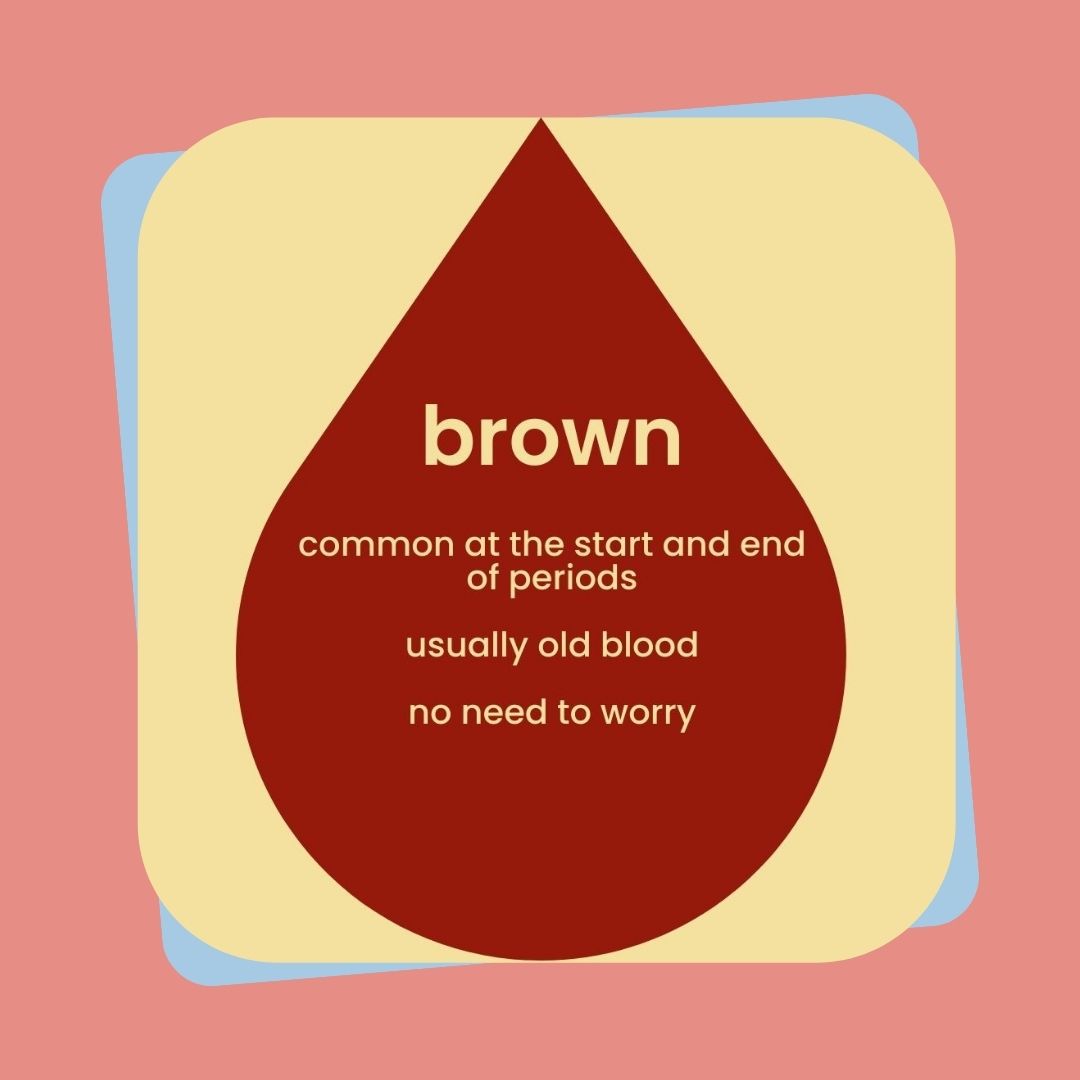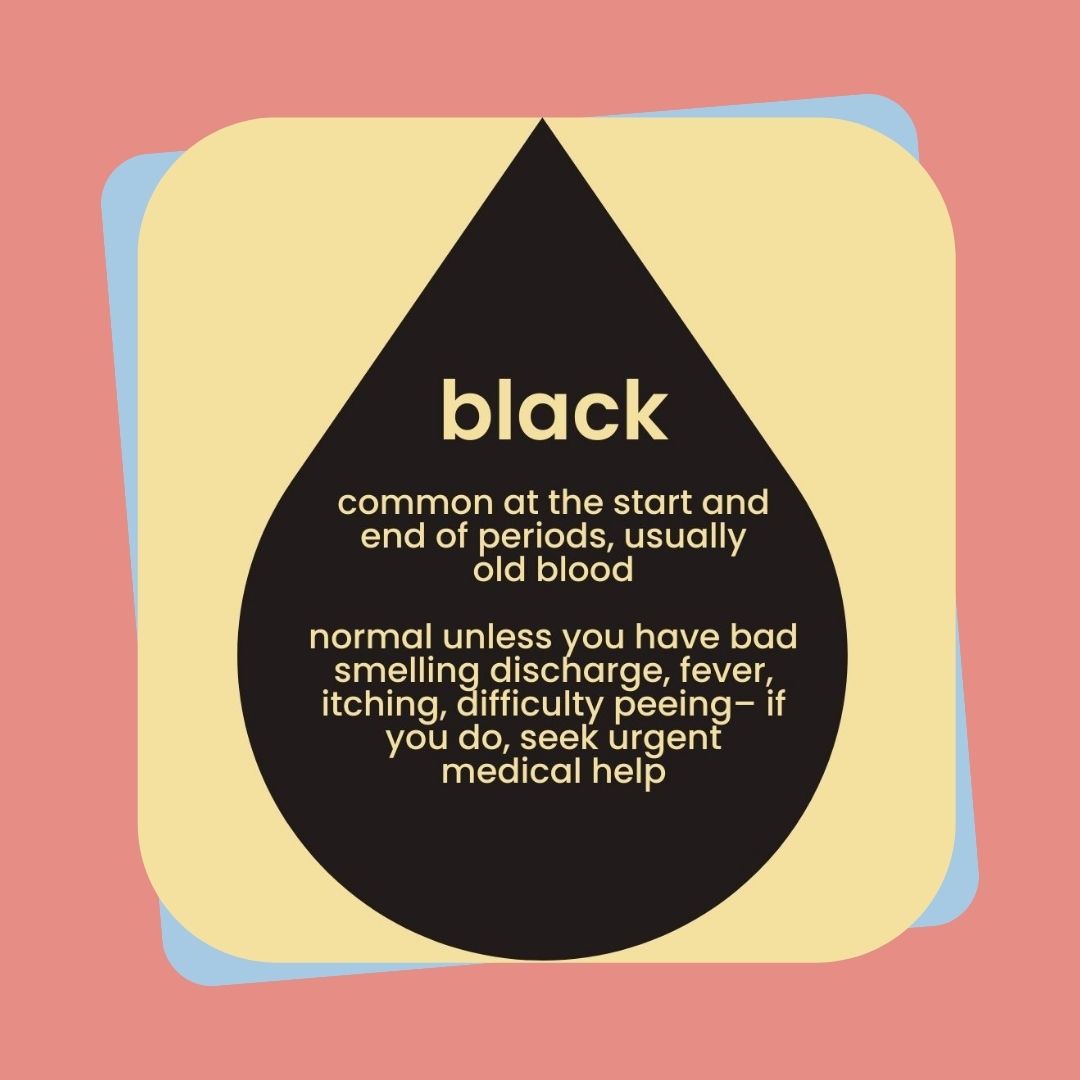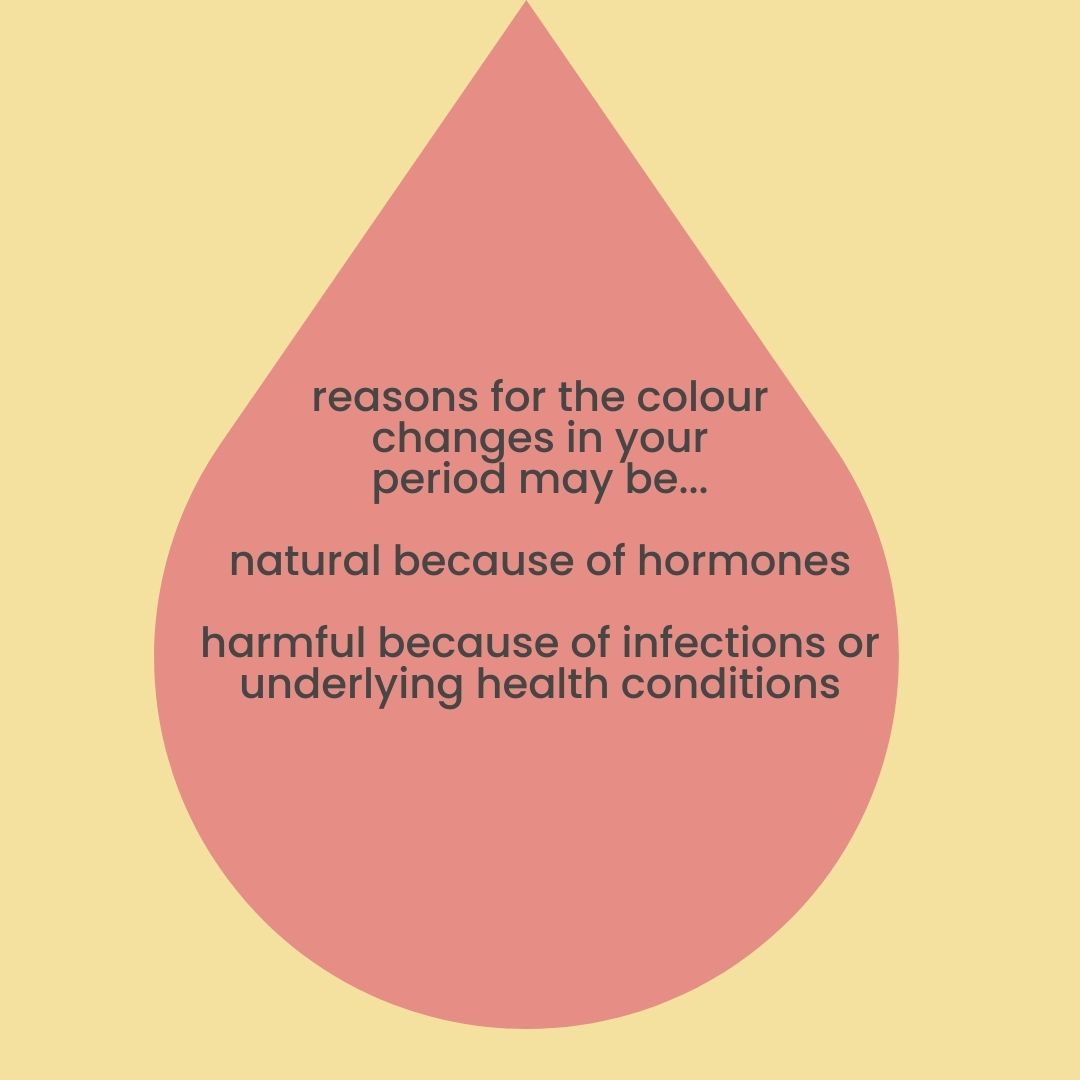
What your period blood colour means
From pink, to grey, orange and red🩸

Quick summary 📝
1️⃣ Bright red blood: normal during heavier flow, not a cause for concern
2️⃣ Brown or dark red blood: common at the start and end of periods, usually old blood, no need to worry
3️⃣ Black blood: common at the start and end of periods, usually old blood, generally normal; seek medical help if associated with other symptoms
4️⃣ Pink blood: could result from dilution with cervical fluid, hormonal changes, or diet; consult a doctor to rule out concerns
5️⃣ Orange blood: could be due to dilution with cervical fluid or infections like bacterial vaginosis or trichomoniasis; seek medical advice
6️⃣ Grey blood: could be linked to bacterial vaginosis; consult a doctor if accompanied by symptoms
--------------------------------------------
It might seem a bit strange but keeping a note of the colour of your period blood can be a helpful part of tracking your health – as well as logging your emotions and symptoms (luna’s got a handy feature for that).
It’s normal for the colour of period blood to change throughout your cycle, but some of these colours might be a sign you need to visit your GP so understanding this is actually pretty important. Here, luna breaks down the different colours your period blood could be, and what each one means.
❤️Bright red blood
This is most likely to happen at the middle of your period when it’s heavier. This is a good indicator of fresh blood with a steady flow. If you’re feeling as you normally do on your period, this is completely normal and nothing to worry about.

🤎Brown or dark red blood
Normally seen at the start and end of periods when the flow of blood is slower. This may show old blood that’s oxidised (reacted with oxygen). These kind of colours (rusty, dark red and brown) are really common during your period and not usually something to worry about.

🖤Black blood
Normally seen at the start and end of periods when the flow of blood is slower. This means the blood has stayed in the body for longer, resulting in oxygen reacting with it and creating a darker-looking blood. If you have some darker blood and are otherwise feeling as you normally do on your period, this is completely normal and nothing to worry about.
Sometimes black blood can be associated with vaginal blockage as the blood stays in the uterus for an abnormally long period of time. Vaginal blockage can happen when something is in the vagina that shouldn’t be there, for example a forgotten tampon. Other symptoms of vaginal blockages are:
- Bad smelling discharge
- Fever
- Difficulty peeing
- Itching in/around the vagina.
If you have black blood and notice any of the symptoms mentioned above, are feeling unwell, or are worried something is stuck inside your vagina, it’s highly important you get urgent medical advice from your GP.

💗Pink blood
Can indicate that period blood has been diluted with cervical fluid (which is usually clear) or that oestrogen levels are low due to the use of birth control, leading to a lighter period. It can also indicate anaemia (low red blood cell count), significant weight loss, or diets that are low in iron or other minerals or vitamins. You should get advice from your GP about this.

🧡Orange blood
Can indicate that period blood has been diluted with cervical fluid, as well as infections like bacterial vaginosis or trichomoniasis. Infections like bacterial vaginosis (BV) or trichomoniasis can lead to discharge (often grey in BV or yellow-green in trichomoniasis). This discharge can cause a colour change as it mixes with red period blood and may make someone’s period appear more orange than usual.
Other symptoms you may also notice:
- A fishy smell
- Pain or burning in the vagina
- Pain when peeing
- Redness down below
It’s really important if you have orange blood that you speak to your GP, as both these infections need treatment with antibiotics.

🤍Grey blood
Can be due to bacterial vaginosis. This is where the acidity levels of the vagina change and can lead to an imbalance and overgrowth of some bacteria in the vagina.
The grey colour occurs due to a collection of bacteria, white blood cells and cellular waste products being carried as vaginal discharge. This mixes with the period blood and can change the colour of your period.
Other symptoms you may also notice:
- A fishy smell
- Pain or burning in the vagina
- Pain when peeing
It’s really important to speak to your GP if you experience any of these symptoms as bacterial vaginosis needs treatment with antibiotics.

Finally, a quick summary: the reasons for colour changes in your period blood may be natural (hormonal changes etc.) or harmful (infections, anaemia etc.).

It’s important that you get the correct medical attention to help you deal with any changes that your body may be facing. And don’t forget to use luna’s symptoms tracker, this can be helpful information to show to your doctor.


